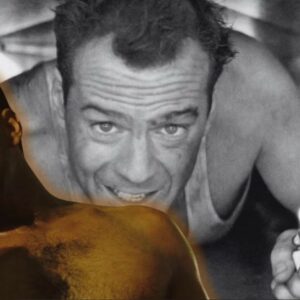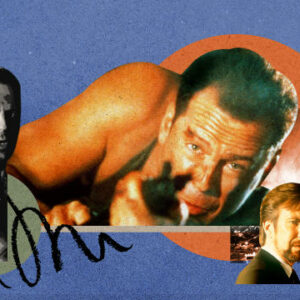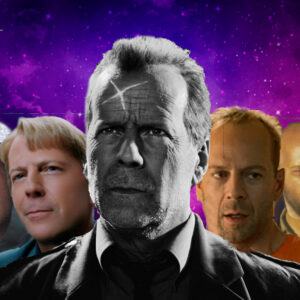Introduction
Bruce Willis, a name synonymous with action-packed cinema and rugged charisma, has transcended the boundaries of Hollywood to become a cultural icon. From his breakthrough role in “Moonlighting” to his legendary portrayal of John McClane in the “Die Hard” series, Willis has not only defined an era of entertainment but also influenced societal trends and norms. This article delves into how Bruce Willis has achieved this iconic status and explores the impact of his roles and public persona on modern culture.
Early Career and Breakthrough
Bruce Willis’s journey to becoming a cultural icon began in the late 1980s with his role in the television series Moonlighting. The show, which combined comedy and drama, showcased Willis’s versatility and established him as a leading man in Hollywood. His charismatic performance as David Addison, a wise-cracking private detective, and his on-screen chemistry with co-star Cybill Shepherd captured the audience’s imagination. This role highlighted Willis’s ability to blend humor with depth, setting the stage for his transition to film and establishing him as more than just a television actor.
Willis’s success on Moonlighting led to a series of high-profile film roles, marking the beginning of a remarkable cinematic journey. His portrayal of a relatable, flawed character became a trademark, challenging the traditional Hollywood archetypes and laying the groundwork for his future success in the action genre.
The Rise of the Action Hero
The turning point in Bruce Willis’s career came with his role as John McClane in Die Hard (1988). This film not only redefined the action genre but also established Willis as a new kind of action hero—relatable, flawed, and resilient. Unlike the invincible heroes of the past, McClane was an everyman caught in extraordinary circumstances, a portrayal that resonated deeply with audiences. The film’s blend of suspense, action, and humor, along with Willis’s charismatic performance, set a new standard for action heroes.
The success of Die Hard was not a one-off; it led to a series of sequels that further cemented Willis’s status as an action star. Die Hard 2 (1990), Die Hard with a Vengeance (1995), and Live Free or Die Hard (2007) continued to build on the formula established by the original, showcasing Willis’s ability to evolve with the genre while maintaining the core elements that made McClane so iconic.
Willis’s portrayal of McClane had a profound impact on the action genre, influencing subsequent films and actors. His everyman approach to heroism, characterized by vulnerability and humor, became a blueprint for future action heroes, paving the way for a more nuanced and relatable portrayal of bravery.
Influencing Trends and Societal Norms
Bruce Willis’s influence extends beyond the silver screen. His roles have often mirrored and shaped societal attitudes. For instance, his portrayal of rugged individualism in Die Hard and its sequels became emblematic of the late 20th-century American ideal of self-reliance and toughness. This image of the lone hero battling against the odds resonated with audiences and reflected broader societal values of resilience and independence.
Moreover, Willis’s unique blend of humor and grit has influenced the way action heroes are depicted. Prior to Willis, action heroes were often larger-than-life figures who seemed invincible. Willis’s portrayal of McClane introduced a new archetype—one that combined physical prowess with an everyman sensibility. This shift in characterization inspired a generation of filmmakers and actors to explore more complex and relatable heroes, contributing to the evolution of the action genre.
In addition to his film roles, Willis’s public image has played a significant role in shaping cultural perceptions. His distinctive style, characterized by his bald head and laid-back demeanor, has become a cultural touchstone. The bald look, in particular, has become synonymous with Willis, and has even influenced fashion and grooming trends. His persona, marked by a blend of toughness and everyman relatability, has resonated with audiences and contributed to his status as a cultural icon.
Cultural Impact Beyond Cinema
Bruce Willis’s influence extends beyond his roles in film. His impact on popular culture can be seen in various aspects of modern life, including fashion, media, and even technology. Willis’s distinctive look and persona have made him a frequent subject of parody and reference in other media, showcasing his role as a cultural touchstone.
For instance, Willis’s bald look has inspired numerous imitators and has become a trend in its own right. The clean-shaven head, once a practical choice for Willis, has become a style statement, reflecting a broader cultural shift towards embracing and celebrating individuality and personal expression.
In the realm of media and advertising, Willis’s persona has been leveraged to promote products and brands, further cementing his status as a cultural icon. His appearances in commercials and endorsements have demonstrated the enduring appeal of his image and have contributed to his continued relevance in popular culture.
Personal Life and Public Persona
Bruce Willis’s personal life and public persona have also played a significant role in shaping his cultural impact. Known for his down-to-earth attitude and sense of humor, Willis has maintained a relatable and approachable image despite his fame. His interactions with fans and the media have reinforced his status as a beloved figure, and his candidness about his personal struggles and achievements has endeared him to audiences.
Willis’s involvement in philanthropic endeavors and charitable causes has further contributed to his positive public image. His support for various organizations and causes has demonstrated his commitment to making a difference, enhancing his reputation as a role model and cultural icon.
Challenges and Resilience
Despite his success, Bruce Willis has faced numerous challenges throughout his career. From fluctuating box office performances to health issues, Willis has navigated a complex landscape of professional and personal obstacles. However, his resilience and determination have been key factors in maintaining his status as a cultural icon.
Willis’s ability to adapt to changing trends and overcome adversity has been a testament to his enduring appeal. His continued presence in the industry and his ability to connect with audiences across different eras have solidified his place in the pantheon of cultural icons.
Legacy and Influence
As Bruce Willis’s career continues to evolve, his legacy as a cultural icon remains firmly established. His contributions to cinema, coupled with his impact on popular culture, have ensured that he will be remembered as one of the defining figures of modern entertainment.
Willis’s influence can be seen in the work of contemporary filmmakers and actors who have been inspired by his approach to storytelling and characterization. His role in shaping the action genre and his impact on societal attitudes have left an indelible mark on the industry and continue to inspire new generations of artists and creators.
Conclusion
Bruce Willis’s journey from television star to cultural icon is a testament to his talent, versatility, and impact on modern cinema. His roles, particularly as John McClane in the Die Hard series, have redefined the action genre and influenced societal norms and trends. Beyond his cinematic achievements, Willis’s public persona and personal life have contributed to his status as a beloved figure in popular culture.
As we reflect on Bruce Willis’s career and legacy, it is clear that his influence extends far beyond the silver screen. His contributions to entertainment, fashion, and societal attitudes have cemented his place as a cultural icon, and his enduring appeal will continue to shape the industry for years to come.





